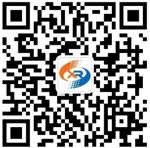The main functions of inductors include the following aspects:
In DC power supplies, inductors, in combination with capacitors, form filter circuits that block AC components and allow DC components to pass smoothly. This filters out AC ripples in the power supply, resulting in a smoother and more stable DC output. For example, in switching power supplies, the inductor and capacitor at the output end form a low-pass filter to reduce the output voltage ripple. In signal processing circuits, inductors can construct filters to select different frequency signals. In audio circuits, they can form high-pass, low-pass, or band-pass filters to achieve audio frequency division and improve audio playback quality.
In switching power supplies, when the switch is on, the power source charges the inductor, which converts electrical energy into magnetic field energy for storage. When the switch is off, the magnetic field energy in the inductor is released, providing energy to the load. By controlling the on and off time of the switch, the process of storing and releasing energy in the inductor can be regulated to achieve stable voltage output. In inverter circuits, the inductor stores energy on the DC side and then releases it to the AC side at appropriate times, producing a stable AC output waveform.
Inductors can realize coupling functions in transformers. The primary and secondary coils of transformers are both inductive components. Through the principle of electromagnetic induction, the AC current in the primary coil generates a changing magnetic field, which induces an electromotive force in the secondary coil. This process achieves energy transfer from the primary to the secondary coil and can be used for voltage step-up, step-down, and isolation in power systems and electronic devices. In some circuits, mutual inductance exists between two or more inductive coils, enabling signal coupling transmission. For example, in the intermediate transformers of radios, the mutual inductance between the primary and secondary coils couples the received high-frequency signal to the next stage for amplification and processing.
4. Resonance Function
Inductors and capacitors can form LC resonant circuits. At a specific frequency, the reactance values of the inductor and capacitor in the LC circuit are equal, causing the circuit to resonate. Resonant circuits are widely used in wireless communication, broadcasting, and television. For example, in radios, by adjusting the variable capacitor or inductor, the resonance frequency of the LC circuit is made to match the frequency of the broadcast station, thereby receiving signals from specific stations.
5. Current Limiting Function
Inductors can impede changes in current. When the current change rate is large, the inductor's current impedes this change, performing a current-limiting function and protecting other components from excessive current impacts. For example, in automotive ignition systems.The inductor in the ignition coil can limit the rate of current increase, gradually increasing the ignition energy and protecting the normal operation of the engine.
Anti-Interference Function
Inductors help to increase the capacitive impedance of the circuit, reduce radio frequency electromagnetic interference near transistors, and suppress radio frequency radiation in radio frequency transmitters. This enhances the overall interference resistance of electronic systems and can combat static interference, reducing pulse noise of high-frequency signals.
【Previous】
What are the common faults of inductors?
【Next】
Inductor Selection Guide





 Sales engineer
Sales engineer (0769)86346548
(0769)86346548
